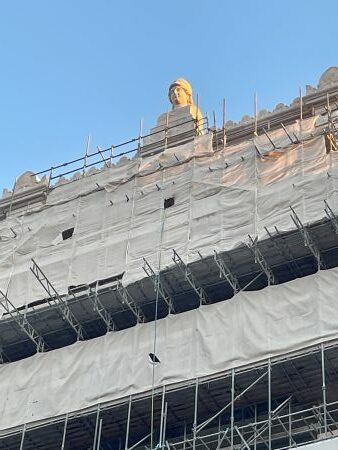The CEO alongside his or her leadership team’s idea that a redesign of the organisation is required, brings fear and dread to the HR Team that will likely be charged with the implementation. And it’s not just HR who experience fear and dread – that too is felt right across the organisation.

On hearing of the advent of a change every person immediately goes into primary thought mode that can be summarised by…
“How will this affect me?”
Self-preservation goes to the top of the agenda, not “How will this benefit the business?” or “What will become of my existing team?”.
The impacts of a “Reorg” as they tend to be lovingly labelled are rarely positive in the short term, the benefits take time to drip down and seep through the new entity. Not everyone will agree on whether the Reorg has been beneficial. In a nutshell, the process only delivers massive disruption before it delivers anything else. This introduces a significant time pressure for a good outcome and a laser focus on the cost of it all.
Why do it?
Thera are a lot of possible responses to this question. Better margins, lower costs, new markets and greater efficiency are all regularly touted. It could be as a response to a merger or takeover (these frequently fail to achieve their objectives – look at the merger of Glaxo and Smith Kline Beecham) or a response to changing market conditions, technology shifts, regulatory moves or a real need to cut costs. Lots of excuses are bandied around for a Reorg.

One of the key works on the subject is Organisational Design by Burton, Obel and Hakonsson July 2020. They do their best to cover it in 270 pages. We’re going to zero in on a few key dimensions.
In truth, the reason is, essentially, that a Reorg is a response to a need, real, perceived, invented or otherwise, to be aligned.
But aligned with what?
We’ll dig into this as best we can in the space available here.
This is the really tough bit. Much academic thinking is that an organisation should align its architecture to the needs of the “Economic Client” i.e. the paying customer and most Marketeers, Customer Service and Salespeople would immediately grasp the logic in that philosophical starting point. “We must be a market facing business” say some.

But, seriously, what does that really mean?
And Finance and Operations however might not agree. Customer focus has the boring downside of being really expensive. So, we can already see the stresses that can and will emerge in a Reorg.
Whatever the internal points of difference in perspective and the external pressures exerted, organisations do need to change shape to remain aligned with the market and the unfolding commercial landscape and be the strongest organisation within that landscape. There is a clear Darwinian dimension to this as organisations seek survival and ideally, primacy.
The Risks – what are they?
A large organisation that seeks to restructure its’ look and feel and alter its actual and virtual presence runs just about every risk imaginable.

Financial risks emerge as unanticipated costs become apparent. The regulatory risks, non-compliance risks can cost dear. Paying clients can flee elsewhere in the face of apparent chaos and the resulting shape of the entity might simply not be fit for purpose. During the disorder of the process to achieve whatever the outcome looks like, key talent may have jumped ship, and the more senior and responsible roles left have had to be filled by lesser talented individuals. One of many highly feasible unintended consequences of a restructured entity.
Importantly, not only does the morphing organisation have to make sense of itself to the outside world, but it has to make some sense to itself internally. So far, it looks like a gloomy prospect. But there is light at the end of the Reorg tunnel.
Considerations, Objectives & Understanding the present Organisation
Before embarking on this risk laden process an organisation needs to take a long hard look at itself. It needs to understand what is wrong today and how to make it better in the next iteration of the organisation tomorrow. You cannot answer a question if you do not know what the question is. Why does the company exist? What is it trying to achieve? What do customers want to see change? How can we make the future workplace be more attractive to retain the better and best staff?

Burton et al state that assessment of goals and assessment of strategy are the first two key tasks. But there is a step before that. The senior leadership team need to engage with the internal and external stakeholders about structure. What are the issues and concerns of all concerned – once we have an understanding of this, we can start to better shape the response. Through consultation and engagement, a reorganisation can be a through the organisation thing which is bought into by all affected (internal and external) whereas a new architecture imposed from the top down will witness little buy in and even less multi-lateral alignment.
To illustrate the complexity of a well-considered change management outcome we can look at this through the prism of IT. As with structures, a one size fits all approach does not work from a plethora of perspectives; operational, cultural and workflow to name just three. You need to bend and shape IT to fit the newly bent and reshaped organisation, so the newly found gains of the new structure are not lost or compromised by the now obsolete IT system.

The new IT MUST fit the new structure and be customised to those that use it. This is also true of the multiple inter relationships that exist through the organisation.
All changes cause & impact other changes.
All actions have a reaction.
Understanding as many of these as possible is the passport to effective change management.
Talk, Engage, Analyse, Repeat
The worst type of reorganisation, the very worst, is that proposed by a third party. They will have no real cultural insight and will be unaware of the highly nuanced relationships that exist in any organisation of any meaningful scale. Before reaching for the phone to a third party to help with what seems an almighty task, to the point of being unmanageable, ask yourselves how you can fully understand the internal (and external) sentiment within the organisation.

What causes people to struggle, what enables success and what will help people reach further, go faster and be happier?
Yes, this will take Time!
If you see restructuring as a revolutionary process where it’s out with the old on Friday and in with the new on Monday then the process is quite quick.
Flawed, but quick.
Poor levels of engagement, a cost saving mentality driving decisions and an absence of genuine customer/market awareness will steer whatever emerges onto the rocks.
But what if change management was a dynamic process that takes place in real time. You could remain continually aligned by following Darwinian principles and staying ahead of the organisational redesign curve permanently. Perpetual organisation redesign can become a sustainable competitive advantage as you move just a little bit faster than your competitors and the markets in which you operate.

Say no to periodic chaos and upheaval. Leave behind ill considered change and the random musical chairs of who does what. Don’t watch the best people go to your competitors.
You just don’t have to…
An HR leader with a hand on the corporate pulse 24/7 will no doubt prevail. The change management curve can be a smooth one and not a line with a horrible periodic spike as the CEO taps on the door and says “We think it’s high time for a ‘Reorg’”. To understand how measuring corporate sentiment in real time can help with organisational design and change management visit www.NoWorriesApp.com
Content & photographs property of NoWorriesApp.com





